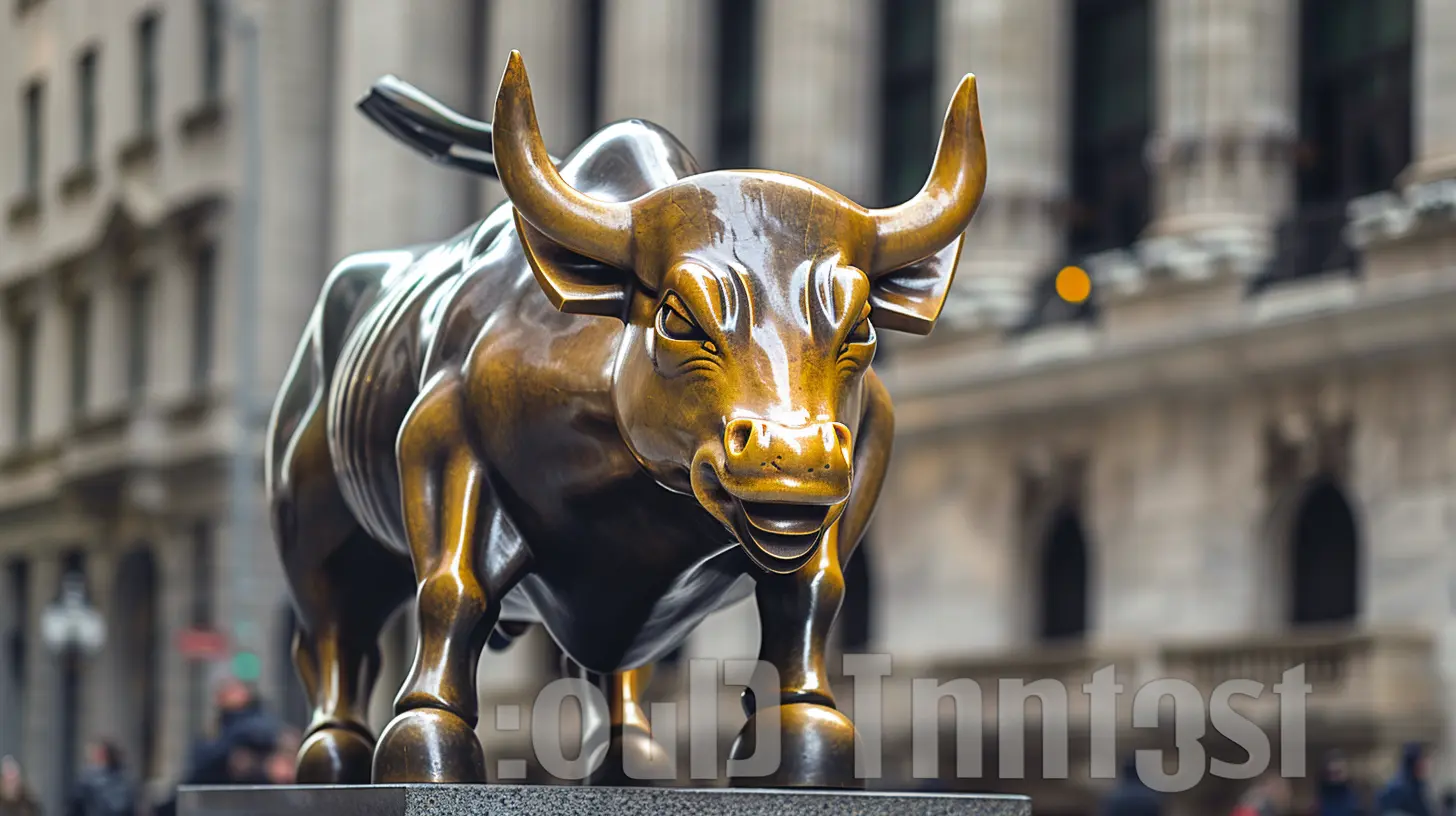Beyond the IPO Hype: Identifying Long-Term Winners
1 June 2025
Initial Public Offerings (IPOs) often make headlines, creating a buzz that excites investors. Companies going public promise massive potential, and everyone's eyes are glued to opening-day performances. But let’s be real—many hyped IPOs fizzle out after the initial excitement.
So, how do you cut through the noise and find long-term winners instead of short-lived hype stocks? That’s exactly what we’re going to tackle.

The IPO Hype: Why It’s Often Overblown
When a company goes public, there’s usually a lot of excitement. Wall Street, media outlets, and everyday investors get caught up in the frenzy, thinking they’ve found the "next big thing." While some IPOs do turn into long-term successes, many others crash and burn once the hype fades.Let’s take a step back and figure out how to spot companies that aren’t just riding the IPO wave but have what it takes to provide sustained growth over time. 
Key Factors to Identify Long-Term Winners
If you’re serious about investing in IPOs for the long haul, you need a framework to separate the hype from the real deal. Here’s what to look for:1. Strong Business Fundamentals
A flashy IPO presentation means nothing if a company doesn’t have solid fundamentals. Before investing, ask yourself:- Does the company have strong revenue growth?
- Is there a clear path to profitability, or is it just burning cash?
- What’s the gross margin compared to competitors?
- Are they drowning in debt, or is the balance sheet healthy?
Companies with shaky fundamentals often crumble under pressure. On the other hand, those with solid financials can withstand economic downturns and continue growing over decades.
2. Competitive Advantage & Moat
A real long-term winner has a durable competitive advantage—also known as an economic moat. This could be:- Brand power (Think Apple or Nike)
- Network effects (Like Facebook or Uber)
- Patents & proprietary technology (Tesla, for example)
- Cost advantages & economies of scale (Amazon’s logistics supremacy)
If a company doesn’t have a strong moat, competitors can easily swoop in and steal market share, leading to struggles after the IPO hype fades.
3. Leadership & Vision
Great companies are often built by visionary leaders. Look at the CEO and executive team. Are they experienced? Do they have a track record of success?Consider companies like Tesla under Elon Musk or Amazon under Jeff Bezos—strong leadership played a massive role in their long-term dominance. If an IPO company is led by inexperienced executives or revolving-door leadership, that’s a red flag.
4. Sustainable Growth Potential
A major mistake investors make is chasing IPOs purely based on short-term revenue spikes. Instead, ask:- Is the company operating in a growing industry?
- Does it have untapped market potential?
- Can it scale operations efficiently?
Companies like Google (now Alphabet), Amazon, and Microsoft succeeded because they entered industries with massive room for expansion. A company without a clear long-term growth trajectory may struggle to sustain investor confidence beyond the IPO stage.
5. Post-IPO Performance & Insider Activity
Many IPOs pop on day one, then slump in the following months. Instead of rushing in immediately, consider:- How does the stock perform 6–12 months after the IPO?
- Are insiders selling or holding onto shares? If executives are dumping stock right after the IPO, that’s a bad sign.
Patience is key. Some of the biggest IPO winners—like Google and Facebook—took time before their stock gained serious momentum. 
Lessons from Past IPO Successes & Failures
Winners: The IPO Success Stories
- Amazon (1997): Initially an online bookstore, Amazon expanded into e-commerce, cloud computing, and beyond. Patience paid off for early investors.- Google (2004): Entered public markets with an incredible business model, strong leadership, and an advertising engine that still dominates today.
- NVIDIA (1999): Initially overlooked by many, its technology became essential for gaming, AI, and data centers—leading to massive long-term gains.
Losers: When IPOs Go Wrong
- WeWork (Failed IPO in 2019): Overhyped, overvalued, and led by questionable leadership. The business model wasn’t sustainable.- Blue Apron (2017): Meal-kit delivery seemed promising, but competition crushed them, and the stock lost over 90% of its value.
- Facebook (2012 Initial Struggles): Struggled post-IPO, but strong leadership and smart acquisitions (Instagram, WhatsApp) helped it become a long-term winner.
What do these failures and successes tell us? A great IPO doesn’t mean a great company, and a rocky start doesn’t always mean failure. The key is long-term execution. 
Smart IPO Investing Strategies
If you want to invest in IPOs wisely, consider these strategies:1. Forget the Day-One Hype
Retail investors often miss out on pre-IPO prices, and buying on day one can be risky. It’s better to wait, analyze performance, and invest after the noise settles.2. Follow the Lock-Up Expiry
Insider selling restrictions typically expire after six months. If insiders start dumping shares, it could signal trouble.3. Compare Valuation to Peers
High-flying IPOs are often overvalued relative to competitors. Look at price-to-earnings (P/E) and price-to-sales (P/S) ratios to see if the stock is worth the hype.4. Dollar-Cost Averaging (DCA)
Instead of going all-in, consider buying in small increments over time. This reduces risk if the stock is volatile post-IPO.5. Look for Secondary Offerings
Sometimes, companies issue more shares after the IPO to raise capital. This can dilute existing shareholders but may also signal confidence in future expansion.Final Thoughts: The IPO Marathon, Not a Sprint
IPO investing is exciting, but it’s not a get-rich-quick scheme. Many overhyped companies fail, while true winners take years—even decades—to reach their full potential.The best approach? Look beyond the IPO buzz, analyze the fundamentals, and invest in companies with real staying power. The stock market rewards patience, and those who focus on real long-term value—rather than short-lived hype—are the ones who win in the end.
all images in this post were generated using AI tools
Category:
Ipo InsightsAuthor:

Zavier Larsen
Discussion
rate this article
3 comments
Isabelle Roberts
This article provides valuable insights into the often-overlooked journey beyond initial public offerings. It’s easy to get swept up in the excitement, but thoughtful analysis and patience are key. Thank you for highlighting the importance of long-term strategy; it can truly make a difference for investors seeking lasting success.
June 16, 2025 at 10:43 AM

Zavier Larsen
Thank you for your thoughtful feedback! I'm glad you found the insights valuable—long-term strategy is indeed crucial for sustained success.
Farrah Franco
Investing post-IPO requires vision and patience. Focus on fundamentals, not hype, to uncover the true long-term winners that will shape tomorrow’s markets.
June 3, 2025 at 12:37 PM

Zavier Larsen
Thank you for your insightful comment! Emphasizing fundamentals over hype is crucial for long-term success in post-IPO investing.
Kate McNeal
Investing: where you might feel like a genius one day and a goat the next. Let’s find those long-term winners together!
June 2, 2025 at 11:18 AM

Zavier Larsen
Absolutely! It's all about staying focused on fundamentals and long-term potential. Let’s uncover those gems together!



